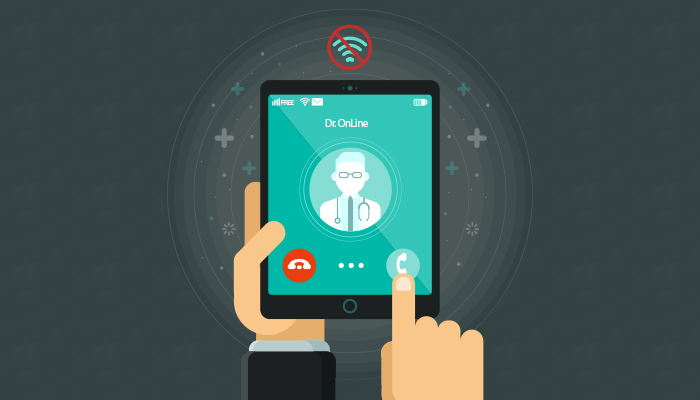
Only 47% of the world has access to the internet((Taylor, Adam. “47 Percent of the World’s Population Now Use the Internet, Study Says”)). That leaves almost 4 billion people across the world without access to it. Closer to home, more than 60 million Americans don’t have access to or cannot afford broadband internet((Molla, Rani. “More than 60 Million Urban Americans Don’t Have Access to or Can’t Afford Broadband Internet.”)). While we live in a world that seemingly is continuously connected, the research shows that there are large chunks of it that are not.

The majority of these people are from rural areas. They often are the most vulnerable members of society. Most of them live far from a decent care providing facility. In these areas, patients have no medical records on hand.
We have already discussed in previous blogs the need for a “person as a whole” approach to treatment and how it impacts the overall outcome. Given the location and the infrastructure that this population lives in, more and more is being done to provide care on location. Community and home based services are a big part of monitoring and improving the health of a population and is measured as an impact of care delivery services. A core feature of an integrated care providing facility must be community and home based services.
Most integrated care facilities today have an integrated Electronic Health Record software. Some have an onsite version, while a majority have a cloud version. On a cloud based EHR system, you can access the EHR from anywhere, as long as you have the internet. On an onsite version, you can access the system if you are physically connected to that particular network. The problem with these remote internet areas is that they have neither.
So what would a care provider do to treat or assess a patient in a location that provides no connectivity? The conventional method is to take paper charts to the location. Imagine the size of the chart for an individual with a long history of multiple diagnosis and treatments and then add on the size of the charts for all the patients the provider has to attend to in a single visit. Now add in the risk of loss of these records due to negligence or accidents like inclement weather. Here is where an integrated care EHR system that can work in a non-connected environment, becomes invaluable. Such systems are called as having an offline mode.
First, let us understand how offline mode works. When you take pictures on your phone, it is stored in the phone. Then you back it up to the cloud. This process enables you to have a copy of the picture on the cloud and the phone. Now think of using another device that takes pictures and that device is backed up to the same cloud. When you connect your phone to the cloud you will see that your phone now has the pictures taken from the other device as well. This is what technologists call synchronization or just “Sync”ing. If we can make our everyday life easier like this, why don’t we apply this to our medical data?
The same features that are available for your photos are now available on advanced integrated care EHR systems that provide an offline mode. Integrated care EHRs with offline mode has to be extra sensitive to the security of medical records that it stores and should follow guidelines.
An Integrated care EHR with offline mode and the ability to be used while being mobile, helps in a multitude of ways. To start with, it helps in the reduction of paperwork on the field. Instead of carrying out medical documents, which, on top of being cumbersome to take to places, could easily be stolen or compromised, can be accessed and input into an EHR. So instead of taking six documents that need to be filled in by hand, then taken back to the practice and then input into the system, you can just input it into your device. Thanks to the ability of the offline mode of the integrated care EHR to sync back with the cloud, that information will be collected, reported and available for use without any delays.
This also protects the patient and the care provider from the possibility of HIPAA violations, as well as making the life of the care provider much simpler by letting them have all of the necessary information in an easily accessible and convenient manner. Imagine a scenario where the care provider can pull up a patient chart, review diagnose, update treatment plan and coordinate care on-site in the presence of the patient.
With an EHR that is mobile and accessible even while offline, care providers can take down the medical history of the people they treat and save it in a secure, cloud based, integrated care EHR. This helps to give the patient a Unified Patient Record(UPR) that can then later be accessed, so that continuous care can be provided. Or if the patient decides to go somewhere else for treatment, they can be given the UPR so that the next person to treat them would have a full history of their health records.
We don’t know when or where they might need care. But if you’re part of the healthcare ecosystem, you have to do your best to give them care when they need it. So when you look for an EHR, make sure to find one that will help you give the best care, to as many people as possible.